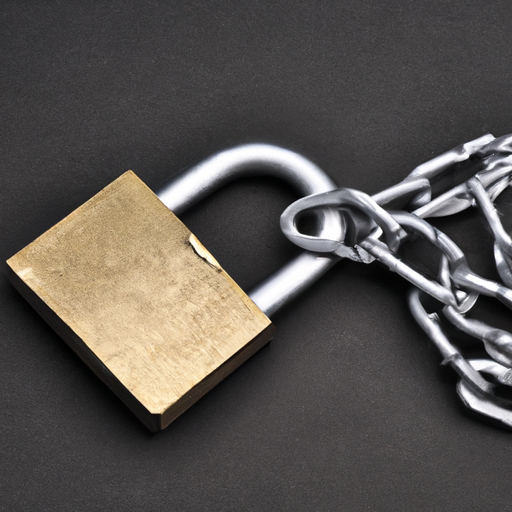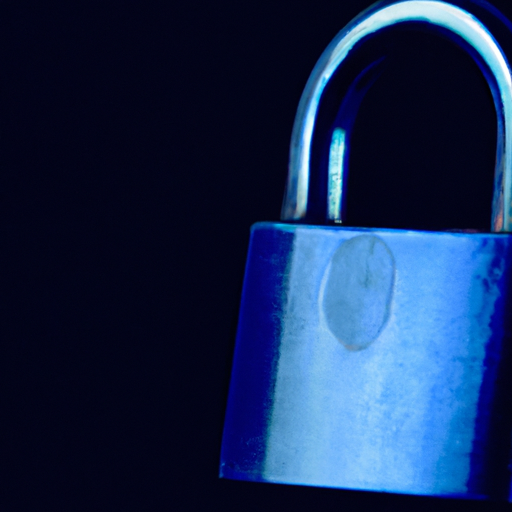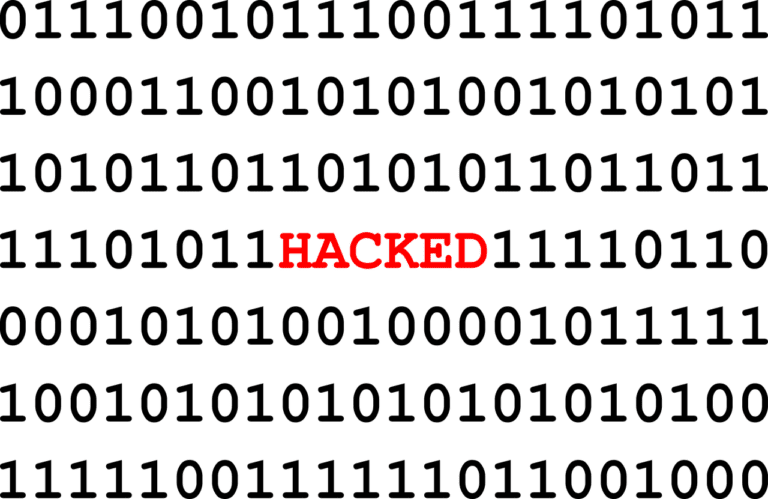How Does Secure/Multipurpose Internet Mail Extensions (S/MIME) Work?
In this article, you will discover how Secure/Multipurpose Internet Mail Extensions (S/MIME) works. S/MIME is a protocol that provides a secure way to send and receive email messages, ensuring the confidentiality, integrity, and authenticity of the communication. By employing digital certificates and encryption techniques, S/MIME safeguards your email content and attachments, making it virtually impossible for unauthorized individuals to intercept or tamper with your messages. Let’s explore the inner workings of S/MIME and understand how it ensures the privacy and security of your email communication.
Overview
What is S/MIME?
S/MIME, or Secure/Multipurpose Internet Mail Extensions, is a protocol that provides a secure way to exchange email messages. It is based on the widely used Multipurpose Internet Mail Extensions (MIME) protocol, which allows for the exchange of multimedia content within emails. S/MIME adds an additional layer of security to MIME by incorporating encryption and digital signature capabilities.
Why is S/MIME important?
In today’s digital age, email has become an essential tool for communication, both personally and professionally. However, the sensitive information often shared via email, such as personal details, financial transactions, and confidential business data, can be vulnerable to unauthorized access or tampering. S/MIME addresses these concerns by ensuring the privacy, integrity, and authenticity of email messages, making it an essential tool for secure communication.
Basic components of S/MIME
S/MIME consists of several fundamental components that work together to provide a secure environment for email exchange. These include digital certificates, the public key infrastructure (PKI), key pair generation, digital signatures, encryption, message digests, secure email exchange processes, and certificate revocation mechanisms. Understanding each of these components is crucial to grasp how S/MIME functions and the benefits it offers.
Digital Certificates
Role of digital certificates in S/MIME
Digital certificates play a vital role in S/MIME by providing a mechanism to verify the authenticity of an email sender and encrypt the email content. These certificates contain the sender’s public key, as well as other information such as their name and email address. By using these certificates, S/MIME recipients can verify the validity of the sender’s identity and establish a secure channel for communication.
How digital certificates work in S/MIME
When a user sends an email using S/MIME, their email client attaches their digital certificate to the message. The recipient’s email client then uses the sender’s certificate to verify their identity and obtain their public key. The recipient’s email client can then encrypt the response using the sender’s public key, ensuring that only the intended recipient can decrypt and read the message.
Certificate authorities and the certificate chain
To ensure the trustworthiness of digital certificates, they are usually issued by trusted third-party organizations known as certificate authorities (CAs). These CAs validate the identity of certificate holders before issuing the certificates. The certificates form a chain of trust, where the CA’s certificate, known as the root certificate, is at the top of the chain, followed by intermediate CA certificates, and finally, the end-user certificates. This chain ensures that the recipient can verify the authenticity of the sender’s certificate by checking the entire certificate chain.
Public Key Infrastructure (PKI)
Understanding PKI
Public Key Infrastructure (PKI) forms the basis of S/MIME’s security framework. It is a set of policies, procedures, and technologies used to manage digital certificates, public and private key pairs, and the associated cryptographic operations. PKI provides the necessary tools and infrastructure to support secure communication and ensures the integrity and authenticity of digital certificates.
How PKI is used in S/MIME
PKI is utilized in S/MIME to manage the lifecycle of digital certificates, including key pair generation, certificate issuance, revocation, and validation. It includes components such as certificate authorities, registration authorities, certificate revocation lists (CRLs), and online certificate status protocol (OCSP) servers. PKI enables the secure exchange of public keys, ensures the privacy of sensitive data, and verifies the authenticity of outgoing emails through digital signatures.
Components of PKI
PKI consists of various components that work together to establish a secure environment for email communication. These components include certificate authorities, which issue and sign digital certificates, registration authorities that handle certificate request and validation processes, OCSP servers that provide real-time certificate revocation information, and CRLs that contain lists of revoked certificates. All these components collaborate to maintain the trustworthiness and security of the PKI infrastructure in S/MIME.
Key Pair Generation
Generating public-private key pairs
Key pair generation is an integral part of S/MIME, as it ensures the confidentiality of email content and verifies the authenticity of the sender. In S/MIME, a user generates a pair of cryptographic keys, consisting of a public key and a private key. The public key is distributed to others, while the private key is kept securely by the user. The keys are mathematically related, with the private key used for encryption and digital signature creation, and the public key used for decryption and signature verification.
Importance of key pair generation
The generation of a secure key pair is crucial for the effectiveness of S/MIME. The strength and randomness of the keys directly impact the security of the communication. Users must ensure they generate keys with sufficient length, using robust algorithms to prevent unauthorized access to their private key and mitigate the risk of attacks such as brute-force cracking.
Use of algorithms in key pair generation
S/MIME employs various cryptographic algorithms for key pair generation, encryption, and digital signatures. These algorithms, such as RSA (Rivest-Shamir-Adleman) and Elliptic Curve Cryptography (ECC), have been widely studied and recognized as secure methods for cryptographic operations. The choice of algorithms for key pair generation must consider factors such as key length, computational efficiency, and the level of security desired.
Digital Signature
What is a digital signature?
A digital signature is an essential component of S/MIME that guarantees the integrity, authenticity, and non-repudiation of email messages. It is a cryptographic mechanism used to verify that an email’s content has not been tampered with and comes from the claimed sender. A digital signature is created with the sender’s private key and can be verified by anyone with access to the sender’s corresponding public key.
Creating a digital signature using a private key
To create a digital signature, the sender’s email client computes a unique hash value of the email message using a hash function. The sender’s private key is then used to encrypt this hash value, resulting in the digital signature. The signature is typically attached to the email for the recipient’s verification. If the recipient can successfully verify the digital signature using the sender’s public key, it ensures the email’s integrity and origin.
Verification of digital signatures using a public key
When a recipient receives an email with a digital signature, their email client uses the sender’s public key, obtained from their digital certificate, to decrypt the signature. The recipient’s email client then generates a hash value of the received email using the same hash function used by the sender. If the decrypted hash value matches the generated hash value, the digital signature is considered valid, indicating that the email has not been altered in transit and came from the claimed sender.
Encryption
Importance of encryption in S/MIME
Encryption is a critical aspect of S/MIME, as it ensures the confidentiality of email communications. By encrypting the email content, S/MIME prevents unauthorized individuals from accessing and understanding the information contained within the email. This is particularly important when exchanging sensitive or classified information, safeguarding it from being intercepted or exposed.
Symmetric encryption
Symmetric encryption is used in S/MIME to securely transmit email messages. Here, the sender and recipient share a single encryption key, which is used to both encrypt and decrypt the email content. The symmetric encryption algorithm ensures the confidentiality of the email content by transforming it into an unreadable format, which can only be deciphered by the recipient using the shared key.
Asymmetric encryption
Asymmetric encryption, also known as public-key encryption, is another encryption method used in S/MIME. It involves the use of two mathematically related yet distinct keys – a public key and a private key. The sender encrypts the email content using the recipient’s public key, and the recipient decrypts it using their private key. Asymmetric encryption eliminates the need for the sender and recipient to share a common key, providing enhanced security for email exchanges.
Message Digest
Generating a message digest
A message digest is a fixed-size, unique representation of a message generated using a hash function. In S/MIME, a message digest is computed by applying a cryptographic hash function to the email content. The resulting digest is then included in the email as part of the digital signature or as a separate entity. The message digest serves as a fingerprint of the email, allowing the recipient to verify the integrity of the message by comparing it to the computed digest.
Use of hash functions
Hash functions play a critical role in creating message digests for email messages in S/MIME. These functions take the entire email content as input and produce a fixed-size hash value. Hash functions are designed to be one-way and collision-resistant, meaning it should be computationally infeasible to derive the original email content from the hash value or find two different content sets resulting in the same hash value.
Integrity check using the message digest
By comparing the computed message digest with the received email’s digest, the recipient can ascertain whether the email has been tampered with during transit. If the two digests match, it indicates that the email content remains intact and has not been modified. However, if the digests differ, it suggests that the email has been altered in some way, alerting the recipient to possible tampering or unauthorized access.
Secure Email Exchange
How S/MIME secures email exchange
S/MIME provides a comprehensive set of security features to ensure the secure exchange of email messages. Through the use of digital certificates, public key encryption, digital signatures, and encryption algorithms, S/MIME protects email communication against unauthorized access, tampering, and forgery. By combining these elements, S/MIME establishes a secure communication channel, enabling users to confidently exchange sensitive information via email.
Signing and encrypting emails
S/MIME allows users to sign and encrypt their emails for enhanced security. By digitally signing an email, the sender assures the recipient that the email has not been tampered with and originates from the claimed sender. Encryption, on the other hand, protects the confidentiality of the email content by scrambling it into unreadable ciphertext that can only be decrypted by the intended recipient. By signing and encrypting emails, S/MIME ensures the integrity, authenticity, and privacy of email exchanges.
Decrypting and verifying emails
On the receiving end, S/MIME enables the recipient’s email client to decrypt and verify emails signed and encrypted by the sender. The recipient’s email client utilizes the sender’s digital certificate to verify the signature and ensure the email’s integrity. If the email is encrypted, the recipient’s email client decrypts the email using their private key, ensuring that only the intended recipient can access its contents. This process ensures that the recipient can trust the received email and its authenticity.
Certificate Revocation
Why certificate revocation is necessary
Certificate revocation is a crucial aspect of S/MIME and PKI to maintain the integrity and trustworthiness of digital certificates. Revocation is necessary when a certificate holder’s private key is compromised or when the certificate’s validity is no longer trusted. Without proper revocation mechanisms, unauthorized individuals may improperly use compromised or expired certificates, leading to potential security breaches. Revocation ensures that recipients can identify and reject compromised or untrusted certificates and maintain secure communication channels.
Different methods of certificate revocation
There are several methods available for certificate revocation in S/MIME. One commonly used method is the use of Certificate Revocation Lists (CRLs), which are lists maintained by certificate authorities containing the serial numbers of revoked certificates. Recipients can periodically retrieve these lists to check the status of certificates. Additionally, the Online Certificate Status Protocol (OCSP) allows for real-time certificate status checking by querying OCSP servers. These methods together enable timely and efficient revocation checking to ensure the validity of certificates.
Certificate Revocation Lists (CRLs) and Online Certificate Status Protocol (OCSP)
Certificate Revocation Lists (CRLs) play a crucial role in S/MIME by providing a list of revoked certificates that recipients can consult to check the validity of certificates. CRLs are typically published and updated regularly by certificate authorities, allowing recipients to download the list and verify certificates’ revocation status. On the other hand, the Online Certificate Status Protocol (OCSP) allows for real-time certificate checking by querying OCSP servers. These servers provide immediate responses regarding the status of specific certificates, helping recipients ensure the integrity of certificate-based operations.
S/MIME Compatibility
Supported email clients and servers
S/MIME is widely supported by various email clients and servers, ensuring a broad range of compatibility. Many popular email clients, such as Microsoft Outlook, Apple Mail, and Mozilla Thunderbird, offer built-in support for S/MIME functionality. Additionally, most major email servers, including Microsoft Exchange Server and Google’s Gmail, support S/MIME encryption and digital signatures. This broad support allows users to leverage S/MIME’s security benefits across different email platforms.
Cross-platform compatibility
One of the significant advantages of using S/MIME is its cross-platform compatibility. S/MIME works seamlessly across various operating systems, including Windows, macOS, and Linux. This compatibility ensures that users can securely exchange emails regardless of their preferred operating system, enhancing communication and collaboration across different platforms.
Interoperability with other secure email protocols
S/MIME interoperates well with other secure email protocols, further expanding its usage capabilities. It can be combined with protocols such as Transport Layer Security (TLS) and Pretty Good Privacy (PGP) to provide advanced security features and enhance secure email communication. These combinations allow for secure email exchange with users who may not have S/MIME support but rely on alternative protocols, improving overall email security and interoperability.








